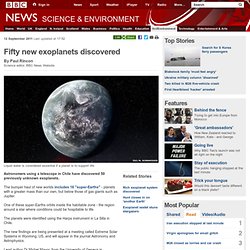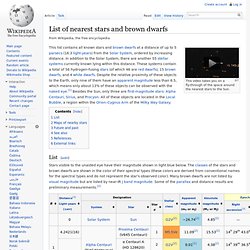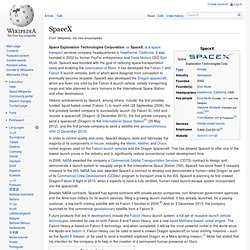

SOFIA Spots Recent Starbursts in the Milky Way Galaxy's Center. Nýtt tungl fannst við Plútó. Astronomy. SOSE - Real-Time Satellite Data.
Mars. Earth. Moon. Planetary Habitability Laboratory @ UPR Arecibo. Fifty new exoplanets discovered. 12 September 2011Last updated at 17:52 By Paul Rincon Science editor, BBC News Website Liquid water is considered essential if a planet is to support life Astronomers using a telescope in Chile have discovered 50 previously unknown exoplanets.

The bumper haul of new worlds includes 16 "super-Earths" - planets with a greater mass than our own, but below those of gas giants such as Jupiter. Nearby, Earth-Like, and Maybe Real After All. The Hubble Deep Field: The Most Important Image Ever Taken. Have we found the universe that existed before the Big Bang? First of all, let me say that this is not a comment on the overall article, but a small portion of it included below.

I stopped reading at the line "it's not clear whether one can even use the term "before" in reference to a pre-Big-Bang cosmos, as time itself may not have existed yet" There is no such thing as "time" as we see it. Time is not something that exists because time is an entirely human created notion. Events simply exist in the current moment, and we have memories of that moment in which they existed. Black Hole Holds Universe’s Biggest Water Supply. By Mark Brown, Wired UK Two teams of astronomers have discovered the largest and farthest reservoir of water ever found in the universe.

It’s 12 billion light years away, and holds at least 140 trillion times the amount of water in all the Earth’s oceans combined. [partner id="wireduk" align="right"]It manifests itself as a colossal mass of water vapor, hidden in the distant APM 08279+5255 quasar. Quasars are bright and violent galactic nuclei fueled by a supermassive black hole at their center. This quasar holds a black hole that’s 20 billion times more massive than the sun, and after gobbling down dust and gas it belches out as much energy as a thousand trillion suns.
International Space Station. The ISS serves as a microgravity and space environment research laboratory in which crew members conduct experiments in biology, human biology, physics, astronomy, meteorology and other fields.[11][12][13] The station is suited for the testing of spacecraft systems and equipment required for missions to the Moon and Mars.[14] After the U.S.

Space Shuttle program ended in 2011, Soyuz rockets became the only provider of transport for astronauts at the International Space Station, while Dragon became the only provider of cargo-return-to-Earth services. The ISS programme is a joint project among five participating space agencies: NASA, Roskosmos, JAXA, ESA, and CSA.[15][17] The ownership and use of the space station is established by intergovernmental treaties and agreements.[18] The station is divided into two sections, the Russian Orbital Segment (ROS) and the United States Orbital Segment (USOS), which is shared by many nations. Purpose[edit] Sunrise at Zvezda Fisheye view of several labs. Waking up, working, and going to sleep in Zero G. NASA. NASA SLS panel - Mike Griffin wraps up. Dr. Michael Griffin, Former NASA Administrator, on How He Got Started in the Space Business. Ex-NASA honcho: Space program limbo "bad policy"
Michael Griffin: NASA 50th Anniversary. America's New Paths in Space. Ceres (dwarf planet) From Earth, the apparent magnitude of Ceres ranges from 6.7 to 9.3, and hence even at its brightest it is too dim to be seen with the naked eye except under extremely dark skies. List of nearest stars. This video takes you on a fly-through of the space around the nearest stars to the Sun.

This list contains all known stars and brown dwarfs at a distance of up to 5 parsecs (16.3 light-years) from the Solar System, ordered by increasing distance. In addition to the Solar System, there are another 55 stellar systems currently known lying within this distance. These systems contain a total of 56 hydrogen-fusing stars (of which 46 are red dwarfs), 15 brown dwarfs, and 4 white dwarfs. Despite the relative proximity of these objects to the Earth, only nine of them have an apparent magnitude less than 6.5, which means only about 13% of these objects can be observed with the naked eye.[1] Besides the Sun, only three are first-magnitude stars: Alpha Centauri, Sirius, and Procyon.
What is the distance between Earth and the International Space Station. SpaceX. Historic achievements by SpaceX, among others, include: the first privately funded, liquid-fueled rocket (Falcon 1) to reach orbit (28 September 2008); the first privately funded company to successfully launch (by Falcon 9), orbit and recover a spacecraft (Dragon) (9 December 2010); the first private company to send a spacecraft (Dragon) to the International Space Station[5] (25 May 2012); and the first private company to send a satellite into geosynchronous orbit (3 December 2013).

In 2006, NASA awarded the company a Commercial Orbital Transportation Services (COTS) contract to design and demonstrate a launch system to resupply cargo to the International Space Station (ISS). SpaceX has since flown 3 resupply missions to the ISS. NASA has also awarded SpaceX a contract to develop and demonstrate a human-rated Dragon as part of its Commercial Crew Development (CCDev) program to transport crew to the ISS. History[edit] Funding[edit] Updates.